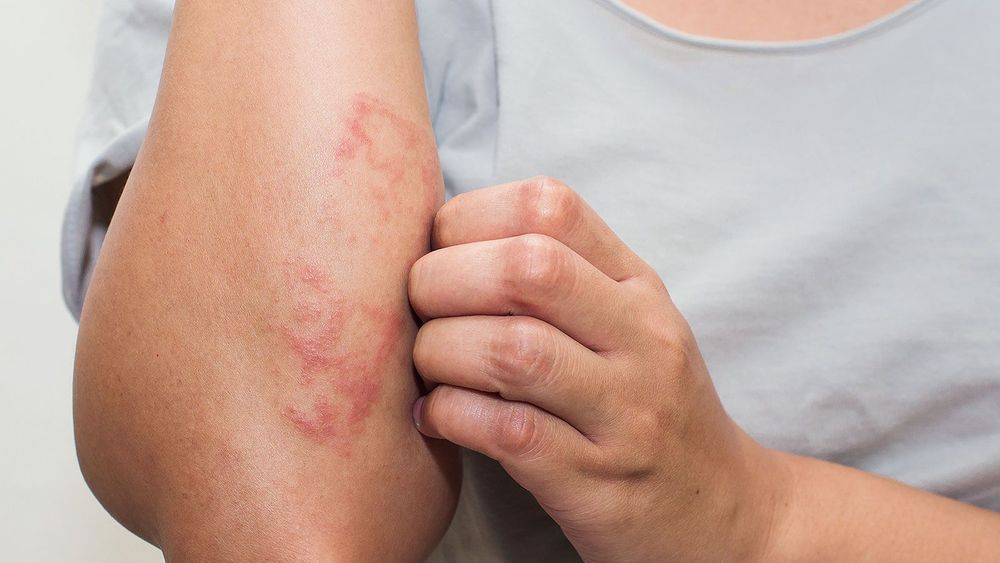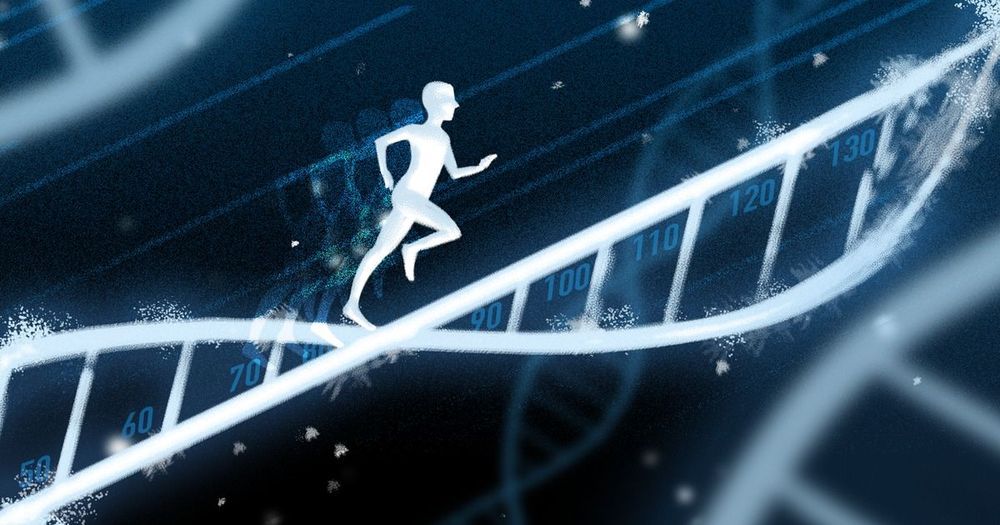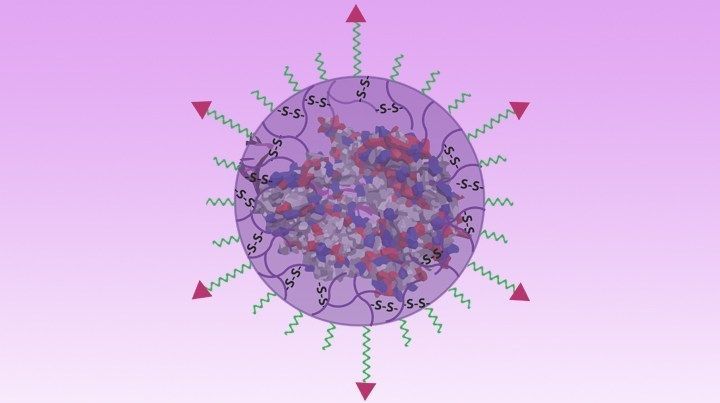Category: genetics
UC San Diego Researchers Isolate Switch that Kills Inactive HIV
Using genetic sequencing, University of California San Diego School of Medicine researchers have identified a principal cellular player controlling HIV reproduction in immune cells which, when turned off or deleted, eliminates dormant HIV reservoirs.
“This is one of the key switches that the HIV field has been searching for three decades to find,” said Tariq Rana, PhD, professor of pediatrics and genetics at UC San Diego School of Medicine. “The most exciting part of this discovery has not been seen before. By genetically modifying a long noncoding RNA, we prevent HIV recurrence in T cells and microglia upon cessation of antiretroviral treatment, suggesting that we have a potential therapeutic target to eradicate HIV and AIDS.”
HIV spreads through certain bodily fluid attacking the immune system and preventing the body from fighting off infections. If left untreated, the virus leads to the disease AIDS.


Greg Fahy at Ending Age-Related Diseases 2019
We’re continuing to release talks from Ending Age-Related Diseases 2019, our highly successful two-day conference that featured talks from leading researchers and investors, bringing them together to discuss the future of aging and rejuvenation biotechnology.
Dr. Greg Fahy of Intervene Immune gave a presentation about his company’s Phase 1 human trials in which the thymus, a critical organ of the immune system, was regenerated through a combination of existing drugs, restoring immune function and causing epigenetic biomarkers to show rejuvenation.

New study links this common skin condition with an increased risk in heart disease
Over 3 million new cases of dermatitis appear in the US per year. Although dermatitis is broadly defined by the sensitivity of the skin, the condition is actually further segmented by a group of diseases. By far the most popular of these is atopic dermatitis, alternatively and perhaps more popularly known as eczema, affecting about 30% of the population. Genetics and environmental factors are the most conclusive predictors but no cause has ever been explicitly determined. The pathology is able to be determined physically, as inflamed skin grows craked and hardens.
Though a new report published in the Journal of the American Academy of Dermatology presents some internal risk increases for sufferers to consider. The Danish researchers set out to examine the association between hospital-diagnosed atopic dermatitis and atrial fibrillation, writing in the report, “Atopic dermatitis is characterized by chronic inflammation, which is a risk factor for atrial fibrillation. P atients with hospital-diagnosed atopic dermatitis have a 20% increased long-term risk of atrial fibrillation, but the absolute risk remains low.”

They Found It!… ‘Human DNA Was Designed by Aliens’ — Scientists Report
“97% of human DNA is genetic code from alien life forms.” scientists who spent 13 years working on the human genome have sensationally claimed…Watch Part 2 Now: https://www.youtube.com/watch?v=jtic3xF2wqI&t=14s
If you would like to support our work, please check out our patreon page https://www.patreon.com/the5thkind.

Guppies teach us why evolution happens
Guppies, a perennial pet store favorite, have helped a UC Riverside scientist unlock a key question about evolution:
Do animals evolve in response to the risk of being eaten, or to the environment that they create in the absence of predators? Turns out, it’s the latter.
David Reznick, a professor of biology at UC Riverside, explained that in the wild, guppies can migrate over waterfalls and rapids to places where most predators can’t follow them. Once they arrive in safer terrain, Reznick’s previous research shows they evolve rapidly, becoming genetically distinct from their ancestors.

Prof. Steve Fuller on Transhumanism: Ask yourself what is human?
Prof. Steve Fuller is the author of 25 books including a trilogy relating to the idea of a ‘post-’ or ‘trans-‘human future, and most recently, Nietzschean Meditations: Untimely Thoughts at the Dawn of the Transhuman Age.
During this 2h 15 min interview with Steve Fuller we cover a variety of interesting topics such as: the social foundations of knowledge and our shared love of books; Transhumanism as a scientistic way of understanding who we are; the proactionary vs the precautionary principle; Pierre Teilhard de Chardin and the Omega Point; Julian and Aldous Huxley’s diverging takes on Transhumanism; David Pearce’s Hedonistic Imperative as a concept straight out of Brave New World; the concept and meaning of being human, transhuman and posthuman; humanity’s special place in the cosmos; my Socratic Test of (Artificial) Intelligence; Transhumanism as a materialist theology – i.e. religion for geeks; Elon Musk, cosmism and populating Mars; de-extinction, genetics and the sociological elements of a given species; the greatest issues that humanity is facing today; AI, the Singularity and armed conflict; morphological freedom and becoming human; longevity and the “Death is Wrong” argument; Zoltan Istvan and the Transhumanist Wager; Transhumanism as a way of entrenching rather than transcending one’s original views…
As always you can listen to or download the audio file above or scroll down and watch the video interview in full. To show your support you can write a review on iTunes, make a direct donation or become a patron on Patreon.

Nano-Sized Solution for Efficient and Versatile CRISPR Gene Editing
If used to make non-heritable genetic changes, CRISPR gene-editing technology holds tremendous promise for treating or curing a wide range of devastating disorders, including sickle cell disease, vision loss, and muscular dystrophy. Early efforts to deliver CRISPR-based therapies to affected tissues in a patient’s body typically have involved packing the gene-editing tools into viral vectors, which may cause unwanted immune reactions and other adverse effects.
Now, NIH-supported researchers have developed an alternative CRISPR delivery system: nanocapsules. Not only do these tiny, synthetic capsules appear to pose a lower risk of side effects, they can be precisely customized to deliver their gene-editing payloads to many different types of cells or tissues in the body, which can be extremely tough to do with a virus. Another advantage of these gene-editing nanocapsules is that they can be freeze-dried into a powder that’s easier than viral systems to transport, store, and administer at different doses.
In findings published in Nature Nanotechnology [1], researchers, led by Shaoqin Gong and Krishanu Saha, University of Wisconsin-Madison, developed the nanocapsules with specific design criteria in mind. They would need to be extremely small, about the size of a small virus, for easy entry into cells. Their surface would need to be adaptable for targeting different cell types. They also had to be highly stable in the bloodstream and yet easily degraded to release their contents once inside a cell.